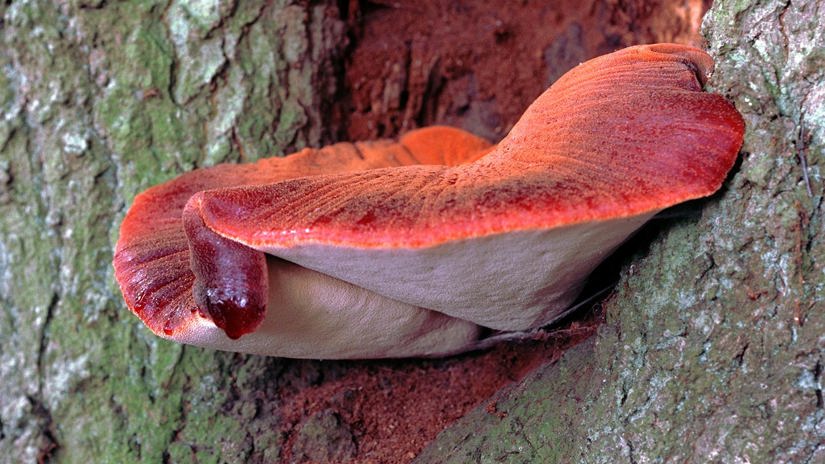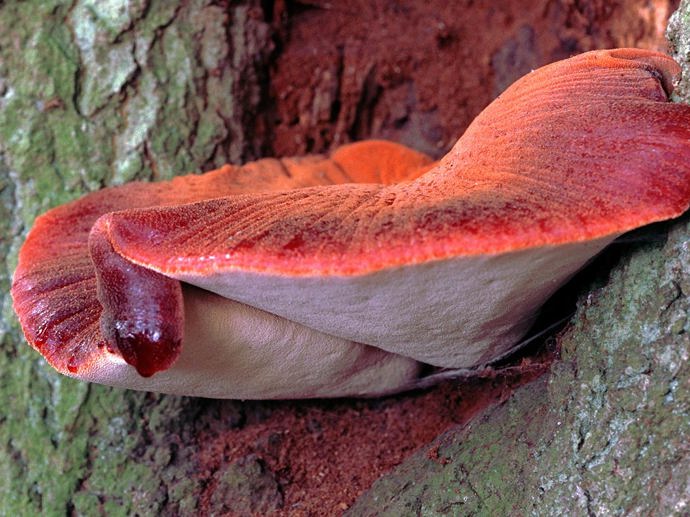Common names: chanterelle, girolle
Scientific name: Cantharellus cibarius
Family: Cantharellaceae
Fruiting season: July to December
Habitat: broadleaved and coniferous woodlands
Prized ingredient. Forager’s favourite. Succulent and delicate in flavour, chanterelle is used by chefs the world over. Yellow or orange in colour, smelling of apricots, chanterelles are a woodland favourite.

Common names: chanterelle, girolle
Scientific name: Cantharellus cibarius
Family: Cantharellaceae
Fruiting season: July to December
Habitat: broadleaved and coniferous woodlands
Chanterelle is the common name for several species of wild, edible fungi in the Cantharellaceae family. They appear between summer and late autumn in woodlands and have a fruity aroma when first picked.
Cap: funnel-shaped, wavy and smooth. It has an orange or yellow colour, and on the underside gill-like ridges run all the way down to the stipe.
Gills: fake gills run along the outside of the cap.
Stipe (stalk): smooth and the same colour as the cap.
Spores: yellow to cream.
Not to be confused with: false chanterelle (Hygrophoropsis aurantiaca) or jack-o’-lanterns (Omphalotus olearius, Omphalotus illudens, Omphalotus olivascens), both of which are poisonous.

Credit: Stefan Holm / Alamy Stock Photo
Chanterelles are common but localised in the UK. They occur mainly in broadleaved woodlands but can also be found under conifer species, forming mycorrhizal (mutually beneficial) associations with a number of tree species where they grow.
Chanterelles are high in Vitamin C and D and very high in potassium.
Records show chanterelles were being eaten as early as the 16th century and their popularity amongst the nobility as the influence of French cuisine spread meant they became a symbol of wealth. Even today they can be very expensive as they are only available in the wild and cannot be farmed commercially.

Credit: Laurie Campbell / WTML
Chanterelle is eaten widely and can be very expensive. It is considered a gourmet fungus by many chefs because of its delicate flavour and succulent texture. It also has medicinal qualities, particularly antibacterial and antiviral properties and contains eight essential amino acids. It also has anti-oxidant properties and contains compounds that help with improving liver function, reducing cholesterol levels, treating thrombosis, and fighting cancer-causing agents.
Its scientific name is derived from the Greek ‘kantharos’, meaning tankard or cup – a reference to their shape.


Helen Keating • 29 Oct 2018
Explore the world of foraging with these top wild fungi picking and cooking tips. Here are five edible fungi that are easy to identify.